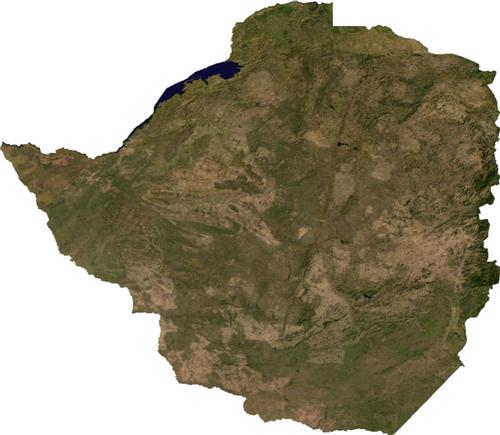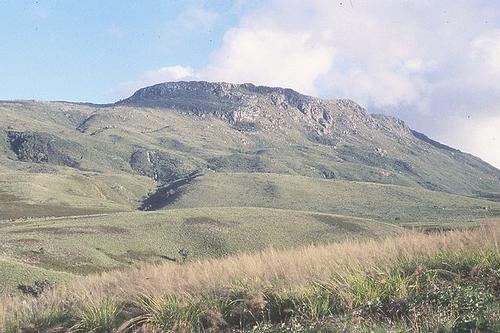ZIMBABWE

Geography and Landscape
Geography
Zimbabwe is located in southern Africa between South Africa and Zambia. Zimbabwe is landlocked and borders on Botswana, Mozambique, Zambia and South Africa. The surface area of Zimbabwe is 390,580 square kilometres.
 Zimbabwe Satellite PhotoPhoto: Public Domain
Zimbabwe Satellite PhotoPhoto: Public Domain
Landscape
The country is dominated by a plateau with a ridge forming the central backbone. This ridge separates two river basins, with water flowing to the north-west in the Zambezi and to the south-east in the Limpopo and Save (Sabi) rivers. The northern part of the ridge is the Mvurwi mountain range with peaks such as Mount Mvurwi (1748 metres) and Mount Chikonyora (1731 metres). The Mashava Hills form the central part and the Matopo the southern part of the ridge.
The highest mountain in Zimbabwe is Nyangani (2592 m), located in the Nyanga National Park in the district of Nyanga.
 West side of Nyangani, Zimbabwe's highest mountainPhoto: Babakathy in het publieke domein
West side of Nyangani, Zimbabwe's highest mountainPhoto: Babakathy in het publieke domein
Climate and Weather
The climate of Zimbabwe is (sub)tropical. Zimbabwe is drier and cooler than you would expect in the tropics. This is because of the altitude of the country, but also because the country is not connected to a sea or ocean. In winter (May to August), the temperature can drop below freezing at night and there is little or no rainfall. Summer lasts from November to April and is also the rainy season.
Plants and Animals
Plants
There are few dense forests in Zimbabwe. Only along the border with Mozambique will you find some rainforest. The 'Lowfield', however, which is hotter and drier, has grassy steppe vegetation with sometimes semi-desert areas.
Animals
Throughout Zimbabwe, lions, giraffes, eland, waterbucks, zebras and other game can still be found in reasonable quantities, especially in the game parks. The big kudu is the national animal of Zimbabwe.
The Hwange National Park is home to the largest herds of elephants and buffaloes in Africa. In Lake Mutirikwi National Park, near Masvingo, there are still rare white rhinos, oribies and nyalas.
Sources
Elmar Landeninformatie
CIA - World Factbook
BBC - Country Profiles
Copyright: Team The World of Info